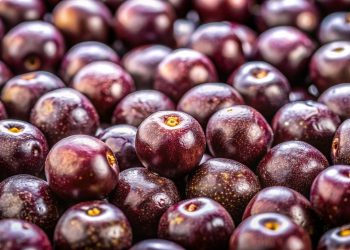Sorghum, rice, wheat, maize and barley are hugely important in the human diet, with more than 50 percent of all calories consumed coming from just a few key cereal crops. Now scientists are pairing modern gene editing with a look at the past to improve the performance of these powerhouse plants.
Before they occupied such a gargantuan portion of our diets, these organisms didn’t look much different than the weedy grasses gardeners and farmers pluck from their plots.
To make them edible, wild crop ancestors were subjected to a process known as domestication. Humans selected varieties of these species for favorable traits, such as larger and more numerous grains and loss of seed dispersal so that precious grains didn’t fall to the earth prior to harvesting.
The process of domestication undertaken by early agriculturalists to develop hearty crop varieties resulted in huge shifts in plant performance. Major genomic shifts underlie the significant transformations observed in the transition from weedy progenitors to domesticated crops.
Researchers are now able to study the genes that were selected for in the process of domestication by comparing the genomes of wild crop ancestors to those of modern varieties. Then, by comparing sets of genes selected during domestication from one crop to the next, researchers are able to generate an even more robust understanding of this process that can be leveraged for further crop improvement.
In a recent study published in Science, scientists compared genes important in domestication for rice and maize. Through this investigation they were able to identify a set of 490 genes that were common to improvement in both crops. One gene, known as KRN2 (kernel row number 2), was found to be important for grain yield in rice and maize. Using gene editing in rice and maize to generate loss-of-function mutations in KRN2 resulted in yield increases of 8 and 10 percent, respectively. Plants with edits exhibited no performance deficits despite having significantly greater yields.
Yield improvements conferred by conventional breeding methods in major staple crops have stagnated within the last decades. The application of advanced breeding methods to generate significant yield benefits is thus an incredibly profound breakthrough. What’s more, the genes identified by studying wild crop ancestors in multiple species may serve as promising future targets for crop performance improvements using gene editing or other breeding methods.
Leveraging genomic understanding of how wild crop ancestors were domesticated into the crops that nourish the global population today has generated improved understanding of additional ways that crops may be further improved. From a list of genes generated using this approach, gene editing was applied to remove the function of a single gene in rice and maize, generating plants with greatly improved yields. Making use of this same approach for other genes in rice, maize and myriad staple crops could similarly produce crops with enhanced yields or performance features that are important to meet the increasingly severe demands placed on the global food system.
By Nicholas Karavolias
O artigo foi publicado originalmente em Cornell Alliance for Science.
















































